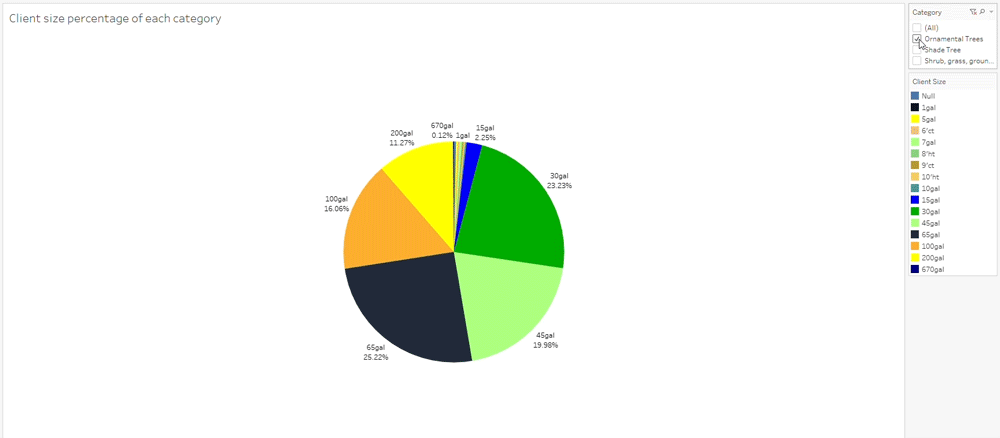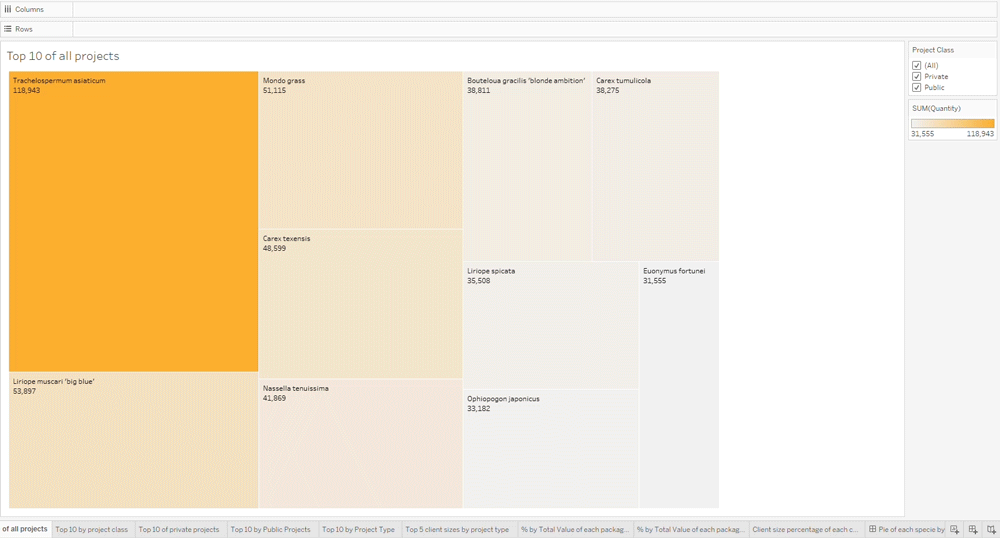Material Demand Analysis: A Nursery Material Case Study
 By
Tommy Lather
·
3 minute read
By
Tommy Lather
·
3 minute read
First of all, a huge thank you to our client for spearheading this project with us. Our goal was to understand our industry’s material demand. We wanted to answer questions: are there existing or emerging item trends; are there common material traits among specific types of projects; are there materials that were once popular, but their popularity is fading?
If you ask a supplier, namely a grower of nursery material, “How did you know to plant those varieties? How did you know how many to plant?” You’d likely hear, “We sold a lot of them last year,” or, “They did really well in this area in the past,” maybe even, “I got a great deal and had an abundance of product on hand.” Yet, the best answer would be, “We quoted a lot of them last year.”
However, what is a quote? Are is your team quoting a bid project or are they quoting a material list that your customer is getting ready to order in the next 2–4 weeks? Suppliers also need to consider how many times they quoted the same list to multiple customers or how many times have they quoted a list to the same customer across numerous iterations of drawings.
Even if you’re asking these questions for every project, does your team archive the information? Are you periodically reviewing historic data?
Takeoff Monkey’s goal is to give suppliers true insight into what their market demands. Anyone with a credit card and an internet connection can buy a subscription to any one of the myriad of construction plan rooms. One can buy access to studies, articles, and other information on the economy of construction; but what about your specific materials?
Maybe, multi-family development is up 50% in your area, but what does that mean for your operation? How do you know that the 50+ acres growing 300 gallon ‘Empire’ Live Oaks are going to find their way to a job site, at your original asking price? How can suppliers know that these plants won’t be sold out of necessity in a ‘fire sale’ to make room for more material in higher demand.

Suppliers keep a pretty good eye on their market, and on their customers’ needs. After all, there are millions of thriving supply companies out there. What if your offering could be fine-tuned to maximize your order fulfillment percentage, profit margin, and dramatically reduce waste?
That is why we’ve set out to complete this case study. We hope to close the gap between the industry’s supply and demand needs.
Needless to say, this project was a massive undertaking, requiring hundreds of hours of tedious, highly skilled labor. The team for this project consisted of a combination of construction estimators, data analysts, and horticulture industry professionals.
We began by identifying a market. For this project, we chose the Dallas-Fort Worth (DFW) metroplex. DFW was ideal for this project as it has both a wide geographical area, and an abundance of new construction projects. Once the market was identified, we started pulling together new construction projects from our wide network of resources including landscape architects, bid plan rooms (both public and private), and contractors. We were able to aggregate around 350 construction projects slated to begin within 12 months of our study.
With all of our projects lined up, qualified, and accepted, we began counting and measuring all nursery material on the drawings for each project. This involved setting thousands of scales, and millions of mouse clicks.
Naming the materials was an undertaking in and of itself. Unfortunately, there is no standardized naming convention for live goods. The closest to standardization we found is the Latin/botanical names for each item. Even using the scientific names, there were huge variances. For example, Texas Redbud appeared in 44 different naming variations, all meaning the exact same item.
We had to apply a similar standardization format for material sizes. Each material item has multiple size attributes of varying importance. Luckily, the industry has a relative standard of measuring: shade trees by caliper inch, ornamental trees by height, and shrubs/grasses/groundcover by container size.
The last key piece of information for each item is the container style, whether the material was required in container, B&B (balled and burlap), or either. All of this information for every item, on each project was manually extrapolated from the blueprints, and into our data table.
We extracted as much known information on the project as possible for the benefit of our supplier clients. Project attributes such as job type (multi-family, commercial, hospitality, etc.), project class (public/privately funded), installation timeframe, location, and much more. When all the information was entered, the data needed to be cleaned and mapped. This was another huge manual process to identify the items from our client’s inventory and production schedule that matched the items we’ve counted and measured.

Download the full Market Material Demand Analysis: A Nursery Material Case Study below.
Contact Takeoff Monkey today to learn more about what our team can do to help analyze your takeoff project data to be leveraged for better inventory planning and informed materials procurement.